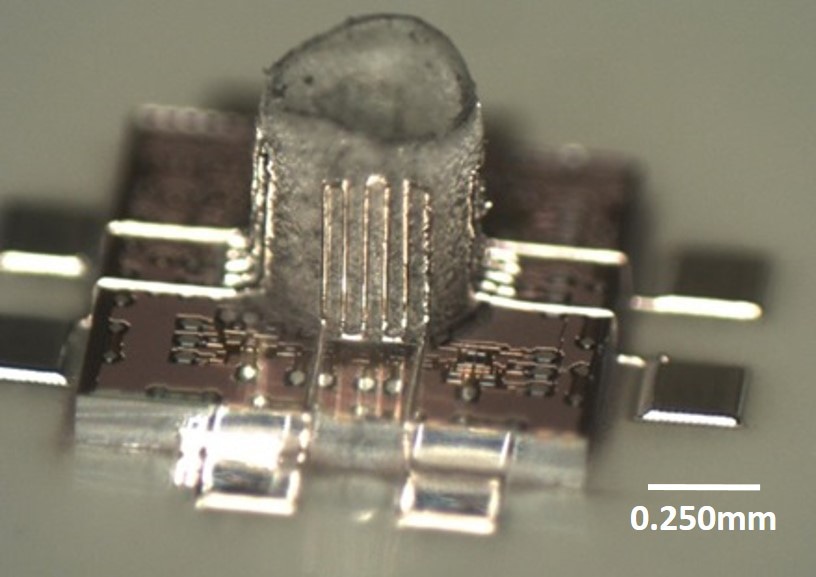Aug 17 2016
 Aerosol Jet 3D Printed Micro-structure showing freestanding, millimeter wave dipole antenna”. (Photo Credit: Optomec)
Aerosol Jet 3D Printed Micro-structure showing freestanding, millimeter wave dipole antenna”. (Photo Credit: Optomec)
Optomec recently announced that its Aerosol Jet Technology is capable of enabling composite structures and 3D polymer to be printed using embedded electronics at the micron scale.
Optomec is an internationally established supplier of production-grade additive manufacturing systems for 3D printed metals and 3D printed electronics. This innovation has the potential to reduce the size and cost of advanced products used in the bio-medical and electronics industries.
This new capability is engineered by integrating a proprietary in-situ curing ability for rapid on-the-fly solidification with Optomec’s proven Aerosol Jet solution for fine feature printing.
In comparison to other high resolution 3D printing approaches that globally deposit material, for instance in a power bed. and later cure locally to determine a pattern, the technique used by Optomec depends on both local curing and local deposition. While this technique makes the process inexpensive with regard to material consumption, it is also a key factor to achieve the highest resolution feature available.
This breakthrough in 3D printing technology extends additive manufacturing to the creation of micron scale, free-form polymer structures and smart devices. We continue to place emphasis on innovation such as Aerosol Jet 3D micro-structure printing to address our customer’s next generation product development challenges.
Mike O’Reilly, Optomec Director Aerosol Jet Product Management.
Early adopter customers have already designed novel applications for micro-fluidic applications and smart devices.
Printing high aspect ratio, free-form 3D structures at the micron-scale is possible with the use of this process, and without using support structures from materials such as photopolymers and specific composites.
In addition, the resulting structures are capable of being metallized using printed functional components, such as sensors and antennas, and conformal 3D conductive traces to design a manufacturing machine comprising of fully functional 3D components.
While optimizing the fabrication process the direct digital approach reduces the steps and material usage required for manufacturing and in turn makes Aerosol Jet 3D micro structure printing a green technology and an inexpensive method.
Aerosol Jet 3D micro-structure printing has the potential to print in ultra-high resolutions and consists of lateral features sizes down to 10 μm, and the vertical and lateral build resolutions ranging between 1 μm to 100 nm respectively. Aspect ratios of over 100:1 have been engineered. These 3D micro-structures are capable of being printed onto existing products and components including industrial parts, semiconductor chips or medical devices.